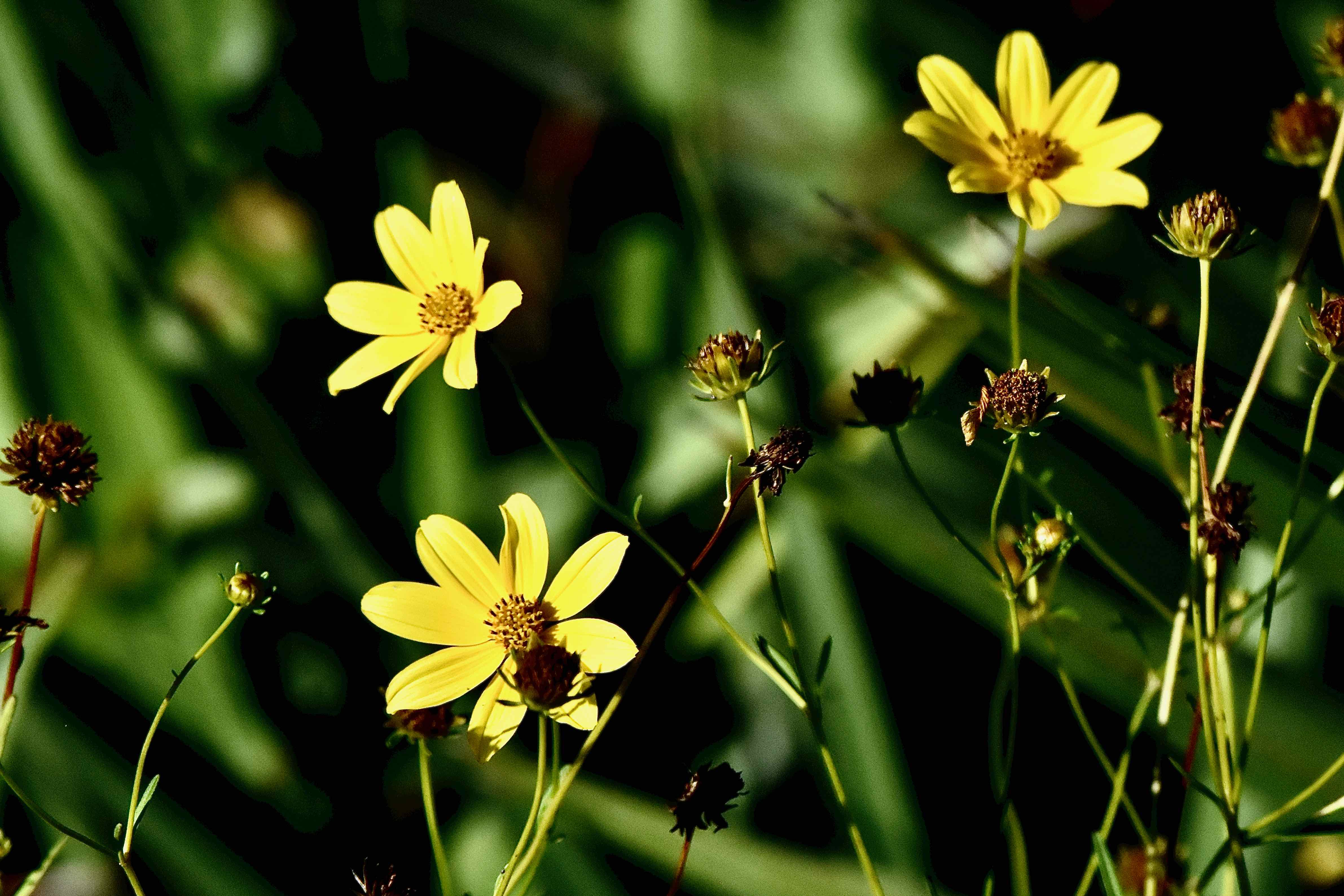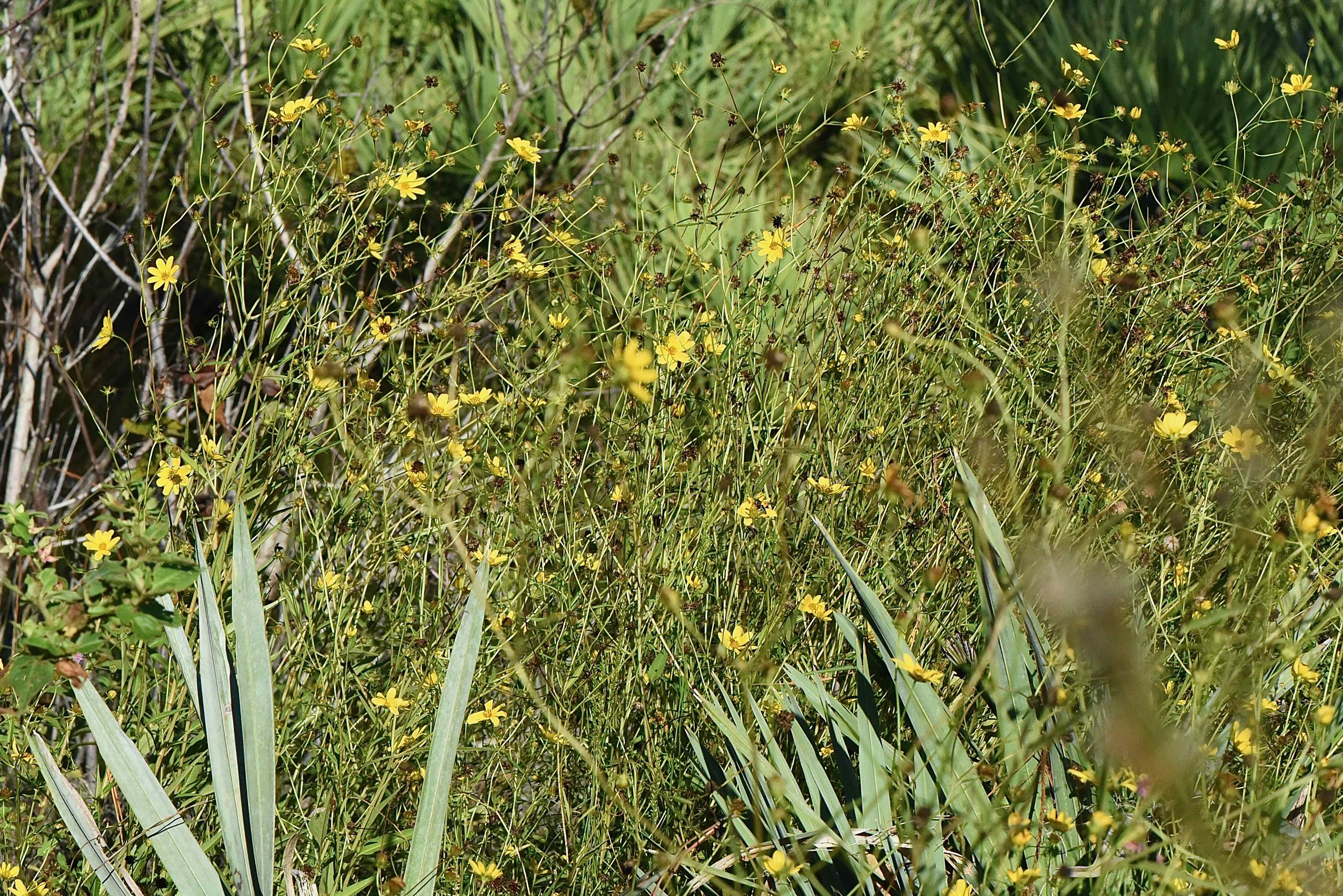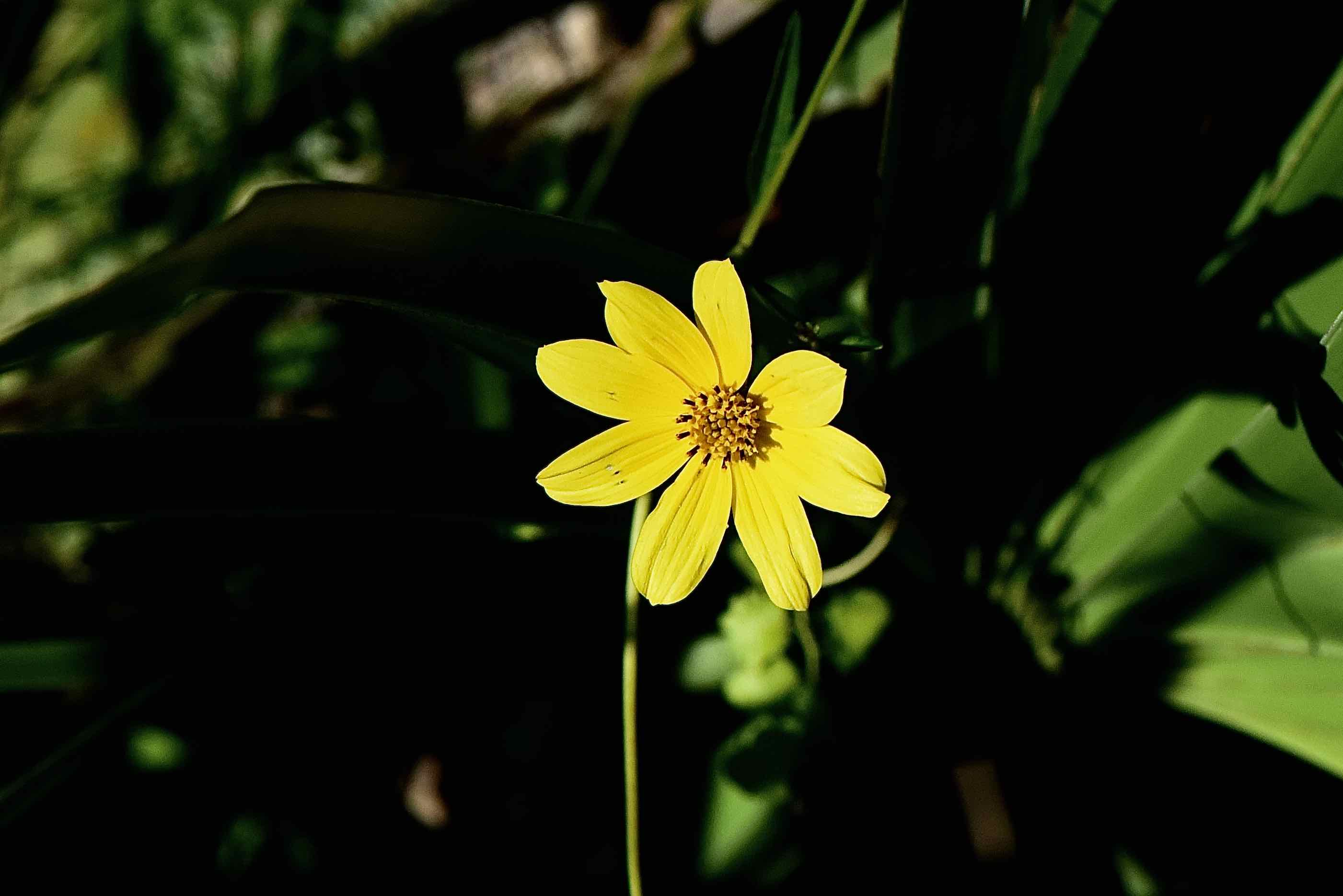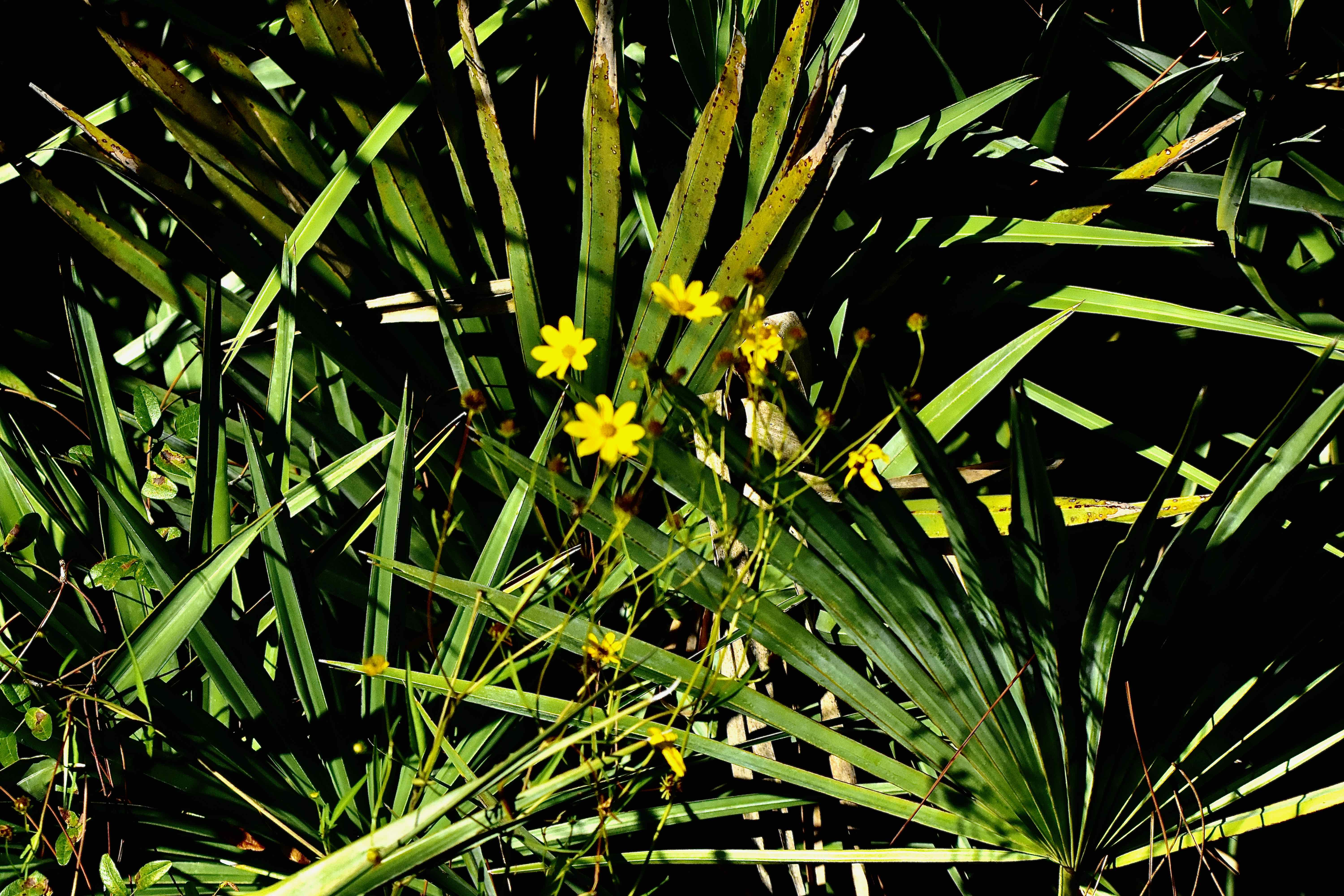
Smallfruit beggarstick, photographed at Jonathan Dickinson State Park, Hobe Sound, Palm Beach County, in October 2023.
Bright beautiful flower. Terrible name.
You would think that someone would have come up with something better for this beacon of light than smallfruit beggarticks, aka Bidens mitis. The only alternative we found was bur marigold, which is only marginally better and is also the common name for a lookalike cousin scientifically known as Bidens laevis (pronounced “leave us”).
It’s a Florida native found in the eastern and central United states as far north as New Jersey, where it’s state-listed as endangered, and as far west as Texas. It’s found throughout both the Panhandle and Peninsula, but becomes a little scarce the farther south you go.
In South Florida, smallfruit beggarticks is found in Martin, Palm Beach and Collier counties, absent in Broward, Lee, Miami-Dade and Monroe counties, both the Keys and mainland.
Smallfruit beggartick takes to wet habitats — swamps, marshes and their edges. We found the plants photographed on this page growing along wet portions of the Kitching Creek Trail in Jonathan Dickinson State Park.
When in bloom, smallfruit beggarticks is impossible to miss, with its masses of two-inch across bright yellow flowers. Smallfruit beggartick flowers typically have eight petals radiating from a central disc made up of 25 to 50 florets. The florets produce a small single-seeded fruit (of course) called a cypsela covered with hairs that snatch onto the fur or feathers of a passing bird or mammal.
Sources vary on when smallfruit beggarticks is in bloom. Some sources say mainly spring into late fall, but will produce flowers year round. Others say late summer into fall. This is a plant we look for any time we visit Jonathan Dickinson since we first spotted it there in 2019 but have not noticed a consistent pattern as to when its in bloom. We’ve see it sometimes in fall and winter but not always. Smallfruit beggarticks is a perennial.
The plant itself is rather tall and spindly, typically reaching two to three feet in height. The leaves are variable in shape but mostly long and somewhat narrow like a lance. The edges might have lobes or they might be serrated — like teeth. They are aligned opposite each other along the stem.
Both the seeds and nectar are significant sources of food for birds, bees, butterflies and other pollinators. It has a cousin, Bidens alba aka Spanish needles, that is extremely common and one of the most important nectar sources in the wilds (and not so wild places) of South Florida.
Smallfruit beggarticks is cultivated and used in restorations and wildflower gardens, but its use is limited because of its need for wet soil.
Smallfruit beggarticks is a member of Asteraceae, the sunflower family.



